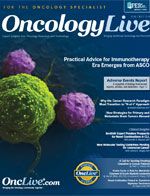Minnesota Researcher Emphasizes Role of Blood-Brain Barrier in Drug Efficacy
William F. Elmquist, PharmD, PhD, discusses the impact of the blood-brain barrier upon the effectiveness of anticancer therapies.
William F. Elmquist, PharmD, PhD
In his laboratory at the University of Minnesota, William F. Elmquist, PharmD, PhD, focuses upon the biochemical processes through which drugs are absorbed, distributed, and eliminated in the human body. His research efforts have shed new light on several established theories about the impact of the blood-brain barrier (BBB) upon the effectiveness of anticancer therapies.
Q: What is the BBB and how does it impact the delivery/efficacy of anticancer drugs?
Elmquist is currently seeking to understand how the BBB changes in brain tumors, and how molecularly targeted agents, such as tyrosine kinase inhibitors and other selective drugs, can be delivered more effectively to those regions of tumor that still have an intact BBB. Another important aspect of his research is considering how antiangiogenic treatments can change the BBB in the tumor and thus alter delivery of drugs.The BBB is comprised of several cell types that form a barrier at the site of the brain capillaries. The primary barrier is thought to be related to capillary endothelial cells joined together with “tight junctions” that do not allow easy diffusion of molecules between the capillary cells. These capillary cells also express active transport systems that efflux molecules out of the brain back to the blood.
Q: Does this effect differ depending on the type of drug—that is, chemotherapy, tyrosine kinase inhibitor, monoclonal antibody?
So the barrier is both an anatomical and biochemical barrier that has evolved to protect the brain. Many anticancer drugs cannot effectively penetrate the BBB, leading to the possibility of an effective drug failing since it cannot reach its site of action—the tumor cell behind an intact BBB.The influence of the BBB on the penetration of different drugs varies widely. Many molecularly targeted agents such as the tyrosine kinase inhibitors are substrates for efflux transporters, such as p-glycoprotein (P-gp) and breast cancer resistance protein (BCRP). These transporters can efficiently limit the distribution of many targeted agents into the brain.
Q: Is the BBB itself altered by tumors and tumor vasculature, and how does this impact drug delivery/efficacy?
Many chemotoxic drugs, like doxorubicin and paclitaxel, are severely limited in their delivery by these efflux proteins. Moreover, the large biologics (peptides and antibodies), many with molecular weights close to 150-kDa, have limited diffusion due to the presence of the tight junctions. In summary, many possibly effective agents have limited BBB penetration for various reasons.The BBB is undoubtedly altered by the presence of the tumor. This happens differently depending on tumor type and tumor size. The tumor can secrete different factors that may breakdown tight junctions—such as the chemokine, vascular endothelial growth factor (VEGF)—and lead to a “leakier” BBB.
However, it is critical to note that this effect can be very heterogeneous throughout the “core” of the tumor and nonexistent in areas close to the invasive edge of a brain tumor. This leads to one of the main misunderstandings by the clinical community—that the BBB is broken down in a tumor so the delivery of drugs across the BBB is not an important problem. Nothing could be further from the truth.
Q: What are the most promising strategies being developed to improve drug delivery through the BBB?
Q: What are the most significant unanswered questions relating to the BBB and its effects on cancer treatment?
This is a very difficult question. The answer lies in both the disease and the drug. For some diseases where there is no choice, such as brain tumors, a more aggressive stance may be warranted. For some diseases that are more chronic, such as dementia—like Alzheimer’s or Parkinson’s disease—a more considered approach to central nervous system drug delivery would be necessary. There are many techniques currently being studied to improve delivery of drugs and these include inhibition of efflux transporters, reversible loosening of the tight junctions, and modifications to the therapeutic moiety itself to make more permeable compounds. The “correct” method to improve delivery will be both disease and drug specific. This is another important yet tough question. Part of the problem is to further define how the BBB changes in the course of disease. Another part of the problem, in the context of brain tumors, is to educate the community that the BBB does not fully “break down” where the tumor is, and we must consider the influence of the BBB on drug delivery when examining reasons for why clinical trials fail with seemingly promising drugs. I am confident that we are making progress, and it will be just a matter of time before we are able to combine several treatment and delivery strategies to effectively treat both primary and metastatic brain tumors.
Every patient will have regions of intact BBB that are protecting the tumor cells from the drug. Drug delivery to the tumor must hit all tumor cells and this idea that the BBB is leaky— and therefore not a problem—is simply false. Moreover, it is possible that treatment of the tumors with an agent designed to improve the tight junctions through an anti-VEGF effect, the antiangiogenic agents, may actually limit delivery to those regions where the BBB has reannealed through the antiangiogenic treatments.




